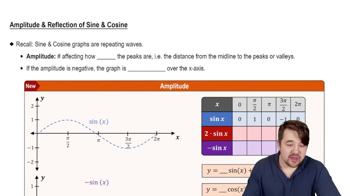An object in simple harmonic motion has position function s(t), in inches, from an equilibrium point, as follows, where t is time in seconds.
𝒮(t) = 5 cos 2t
What is the frequency?
 Verified step by step guidance
Verified step by step guidance Verified video answer for a similar problem:
Verified video answer for a similar problem:



 5:53m
5:53mMaster Graph of Sine and Cosine Function with a bite sized video explanation from Patrick
Start learning